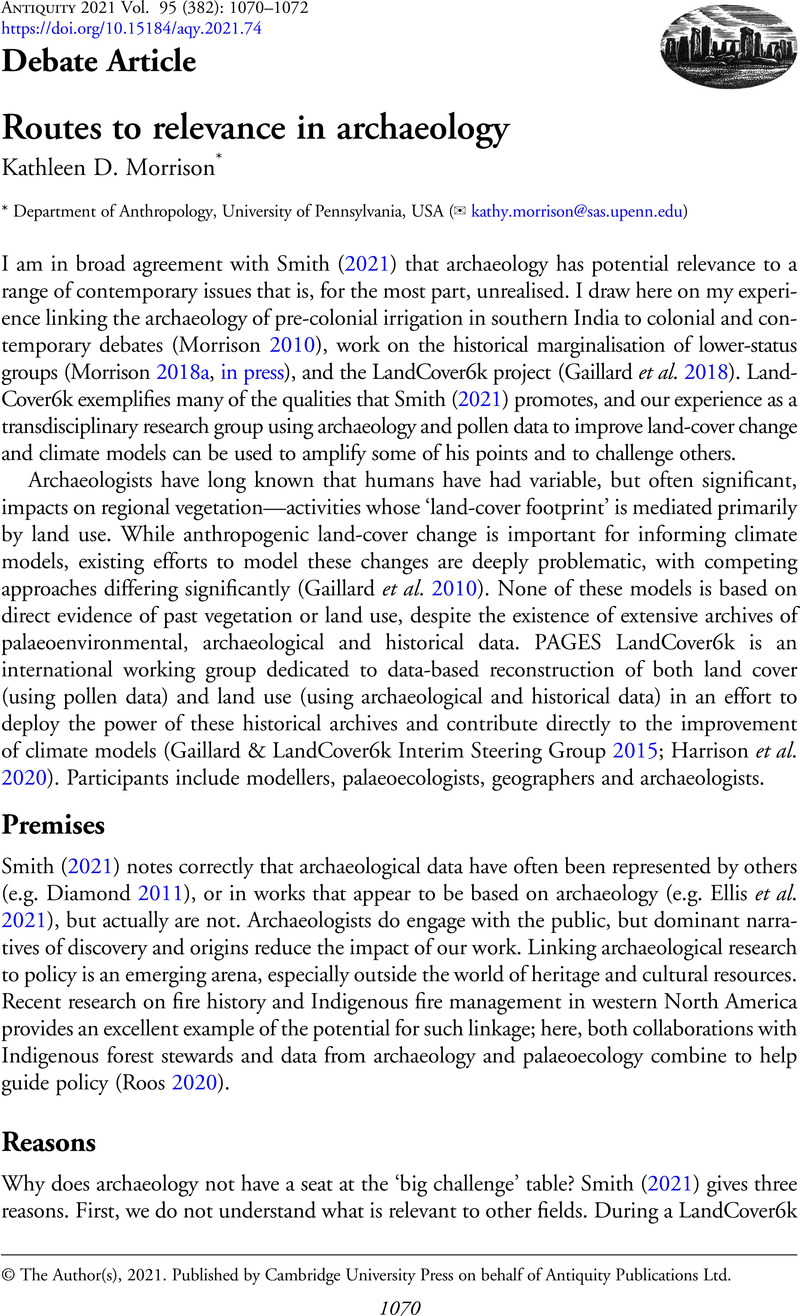Crossref Citations
This article has been cited by the following publications. This list is generated based on data provided by Crossref.
Roberts, Patrick
Hamilton, Rebecca
and
Piperno, Dolores R.
2021.
Tropical forests as key sites of the “Anthropocene”: Past and present perspectives.
Proceedings of the National Academy of Sciences,
Vol. 118,
Issue. 40,
Smith, Michael E.
2021.
Archaeology, relevance and science.
Antiquity,
Vol. 95,
Issue. 382,
p.
1085.
Witcher, Robert
2021.
Editorial.
Antiquity,
Vol. 95,
Issue. 382,
p.
855.
Zhuang, Yijie
and
Lane, Paul J.
2021.
Harvesting the winds, harvesting the rain: an introduction to the issue on Inhabiting tropical worlds.
World Archaeology,
Vol. 53,
Issue. 4,
p.
563.



